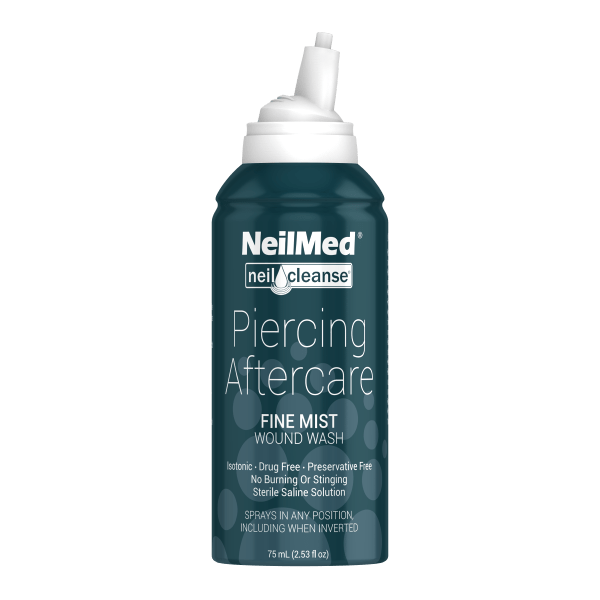Aftercare
Thank you for choosing Sacred Piercing and congratulations on your new body piercing! Be sure to follow these aftercare instructions for the entire healing process.

Thank you for choosing Sacred Piercing and congratulations on your new body piercing! Be sure to follow these aftercare instructions for the entire healing process.

Do the following steps 2 or more times a day:
Step 1: Wash your hands thoroughly
Step 2: Spray your piercing’s entrance and exit holes with Sterile Saline Wound Wash to soften any crusty matter
Step 3: Saturate non-woven gauze with Sterile Saline Wound Wash and wipe away any crusty matter and discharge from the jewelry
Step 4: Spray your piercing with Sterile Saline Wound Wash to rinse the area
Step 5: Gently pat the piercing dry with non-woven gauze
Once daily: Rinse your piercing with fresh water in the shower. This will loosen any hard, crusty matter on the jewelry. After showering, be sure to follow the cleaning instructions.
Rinse your mouth out with filtered or bottled water regularly.
Infection is rare, however, seek medical attention at the very first sign of an infection. Symptoms include: sudden onset of swelling, excessive bleeding, discharge of yellow, green, or dark colored fluid. Some redness is normal but excessive redness and/or red streaks coming from the piercing site are an indication of serious problems. Fever, dizziness, nausea, or vomiting may also be signs of infection. If any of these symptoms occur, immediately contact a medical professional.